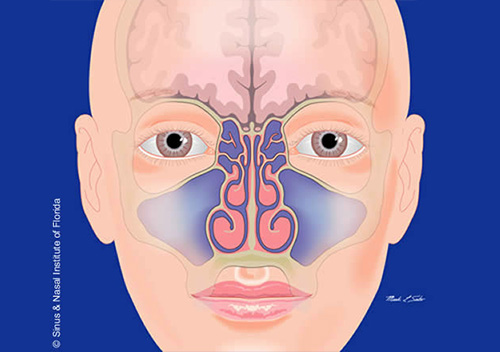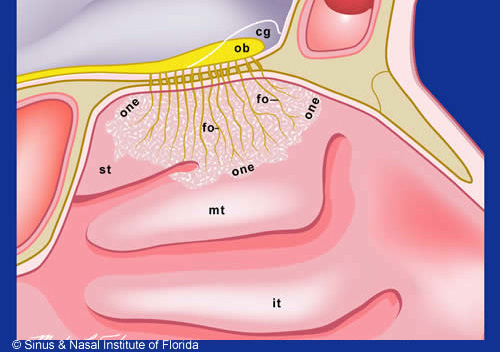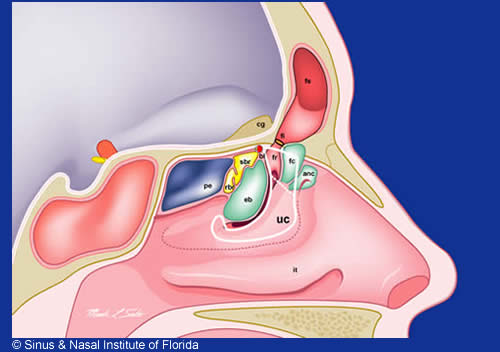

The nose, nasal passages and the paranasal sinuses are important structures with many functions associated with comfort of breathing, protection from foreign substance, and sense of smell. The nose and nasal cavity are divided into two sides by a “wall” in the center of your nose, called the septum. The septum is composed of bone and cartilage that is covered by a mucus producing membrane called the mucosa. Each nostrils open into a nasal passage. Each of the two nasal passages has a centered wall (the septum) and a side wall which has boney projections called turbinates. Varying sized air containing chambers some of which resemble a honeycomb are situated behind the bones of the face are called the paranasal sinuses. These sinuses drain into the nasal passages. The roof of the paranasal sinuses is adjacent to skull base and their side walls are next to orbits (where the eyes reside). Five pairs of sinuses and three to four pairs of turbinates are typically present.
The five pairs of sinuses are named the:

Maxillary & Ethmoid Sinuses (blue); turbinate (round pink structures)

Sense of smell fibers (stippled white & yellow) reside on the middle & superior turbinate (st and mt)

Frontal sinus (dark pink top right) , Ant. ethmoid sinuses (green and yellow), Post. Ethmoid sinus (blue), sphenoid sinus (pink to left of blue)
The turbinates are named the:
The paranasal sinuses connect with the nasal cavity via narrow openings called ostia that drain through channels adjacent to the turbinates. Air and mucus enter and exit to and from the sinus through these openings.